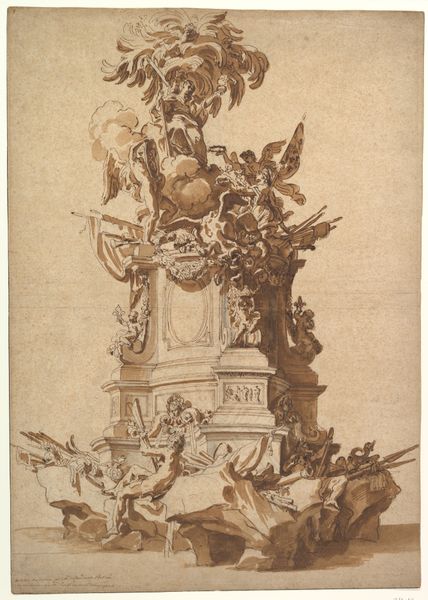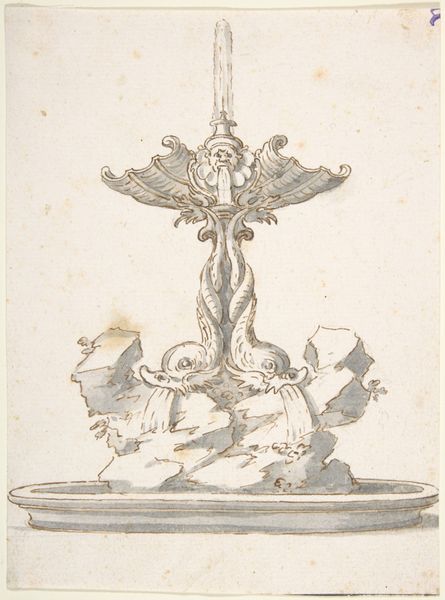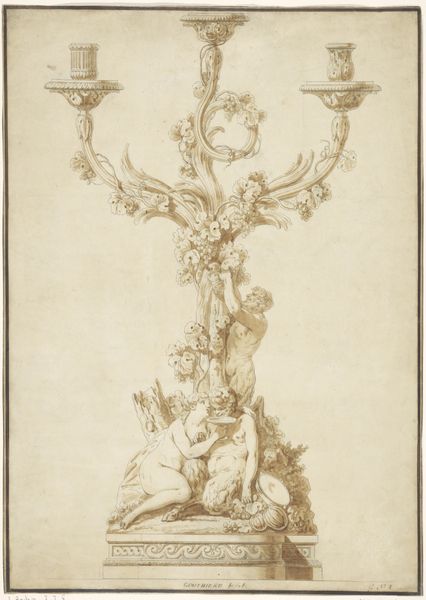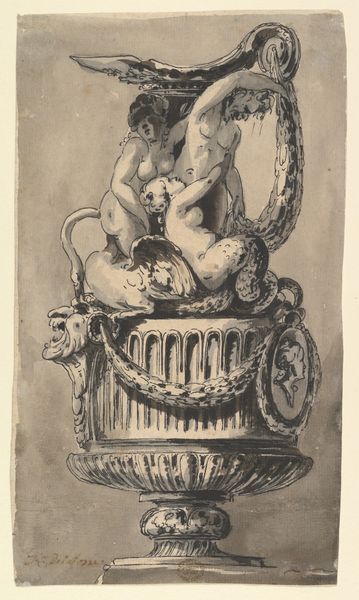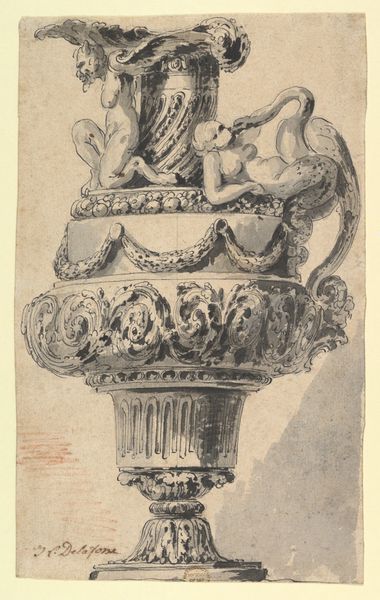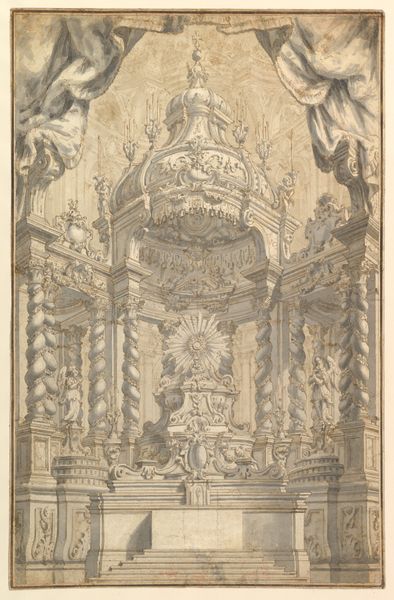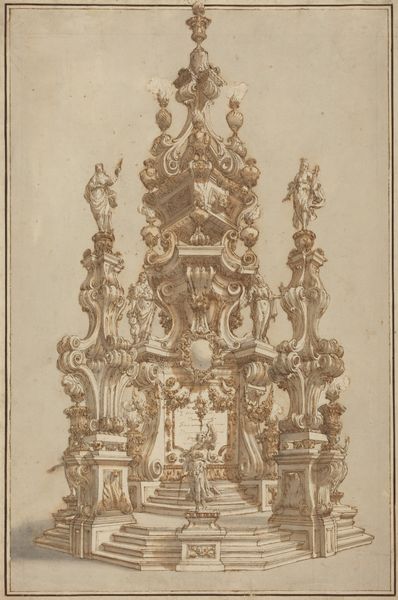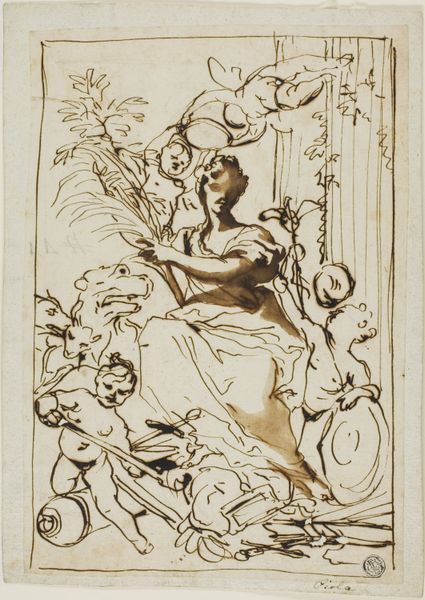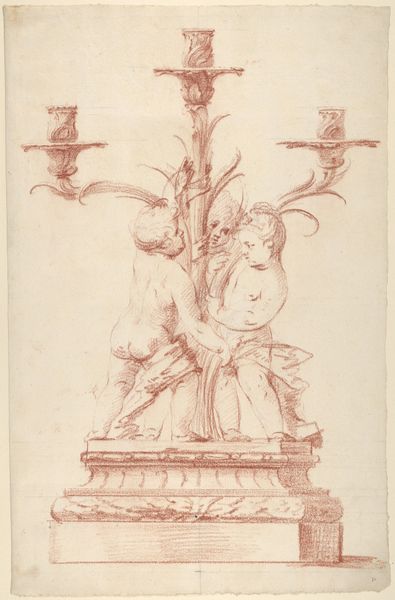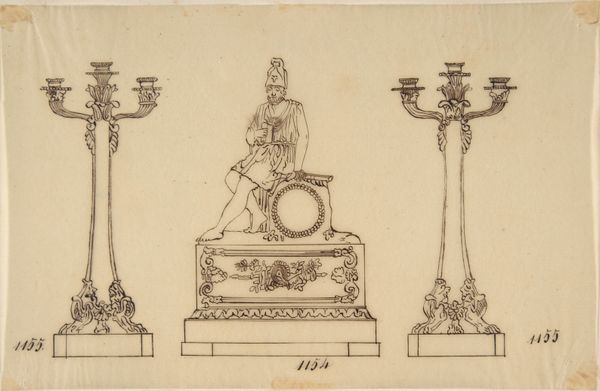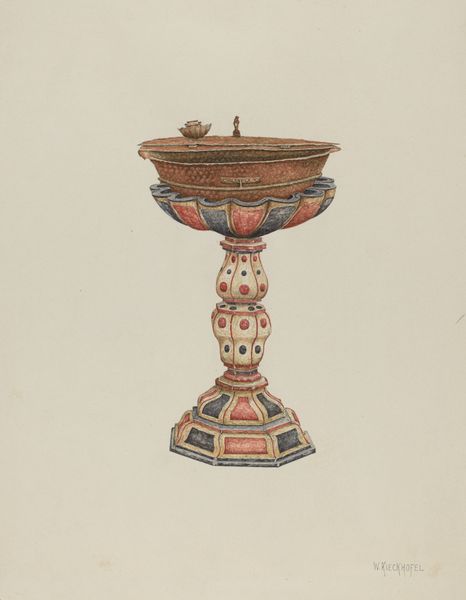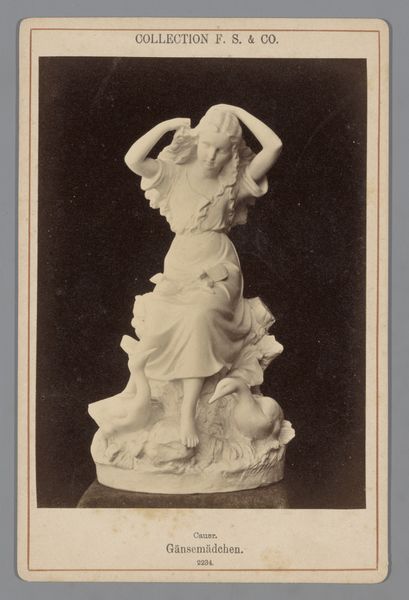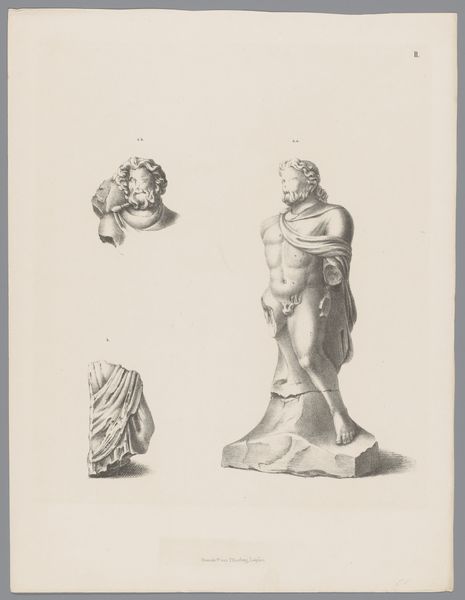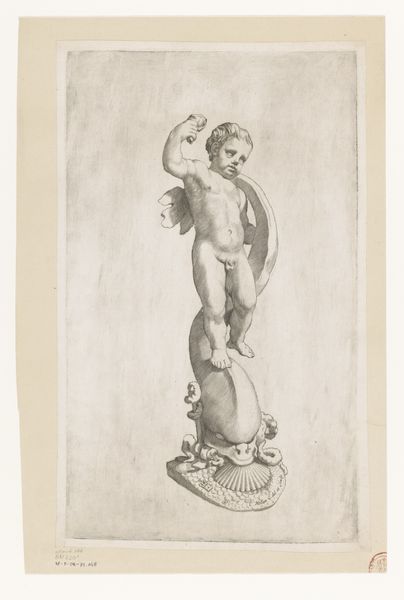
ceramic, porcelain, sculpture
#
baroque
#
ceramic
#
porcelain
#
sculptural image
#
figuration
#
sculpture
#
decorative-art
#
miniature
#
rococo
Dimensions: Overall (confirmed): 24 1/8 × 13 × 10 3/4 in. (61.3 × 33 × 27.3 cm) Footprint at base (confirmed): 10 in. × 10 1/8 in. (25.4 × 25.7 cm)
Copyright: Public Domain
This five-light candelabrum was made of porcelain at the Meissen Manufactory. Established in the early 18th century, Meissen was the first European factory to successfully produce true porcelain, a closely guarded secret previously known only to Chinese artisans. The factory’s establishment marked a shift in European decorative arts, moving away from reliance on imports from the East. This candelabrum reflects the elaborate tastes of the European aristocracy during the Baroque period, a time when porcelain was highly valued for its beauty and rarity, and was collected by wealthy individuals and royal families as symbols of status and refinement. The figure and embellishments create a sense of opulence and luxury, reflecting the social hierarchies and courtly culture of the time. To fully understand the candelabrum, one might consider the archives of the Meissen factory and study the social history of porcelain production and consumption in 18th-century Europe. Only then can we truly appreciate the artistry and cultural significance of this object.
Comments
No comments
Be the first to comment and join the conversation on the ultimate creative platform.
